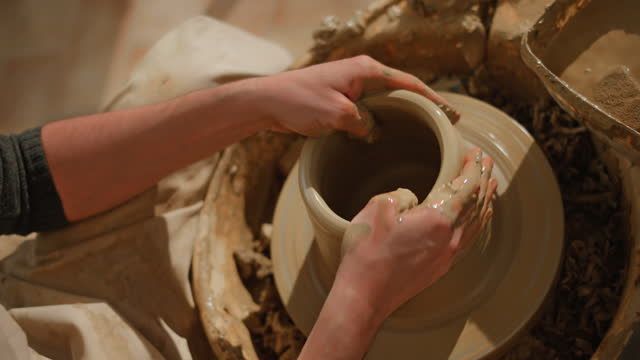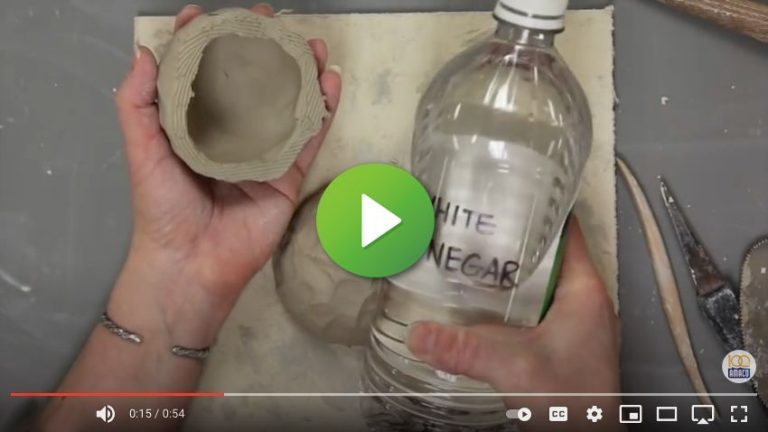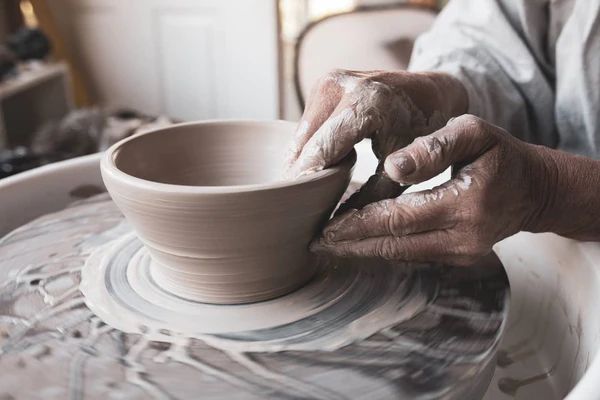What Makes Ceramic Glaze Shiny?
Introduction
Ceramic glazes are an important part of pottery and ceramics. They provide surfaces with decorative colors, textures, and finishes. Glazes come from combining and melting different minerals, materials, and chemicals. The glaze is applied to an unfired (“green”) ceramic piece, which is then fired at high temperatures in a kiln. This fuses the glaze with the clay body creating a glass-like coating.
One desirable quality of glazed surfaces is a shiny or glossy appearance. This shine results from the smooth glass layer formed during firing. The factors that produce glaze shine involve the ingredients, preparation, application method, and firing. This article will examine what makes ceramic glazes shiny by looking at the key elements in glazing to achieve glossy finishes. It will provide potters, ceramicists, and other artists helpful information on glaze chemistry, recipes, techniques, and troubleshooting for shiny glazed surfaces.
Glaze Ingredients
The main ingredients in ceramic glaze that affect its shininess are silica, fluxes, and alumina. Silica, in the form of quartz or flint, provides the glass structure in glazes. Fluxes such as soda ash or feldspar help lower the melting point of silica to make glazes more fluid at typical firing temperatures. Alumina provides strength and stability to the glaze surface. The interactions between these ingredients during firing determine the final surface quality of the glaze.
Silica has a very high melting point on its own, around 1710°C, making it difficult to melt fully into a glaze. Adding fluxes like sodium, potassium, and calcium from materials like soda ash, potash feldspar, and calcium carbonate help lower the melting point of the silica. The more flux in a glaze recipe, the shinier and more molten the surface becomes (Source).
Alumina from materials like kaolin clay provides form and rigidity to the glaze surface. Too much alumina can prevent the glaze from flowing properly at the firing temperature. The right balance of flux, silica, and alumina allows the glaze to melt smoothly and evenly during firing to achieve the most optimal shine.
Firing Process
The firing process is critical for developing a shiny glaze finish. Glazes are made up of minerals, oxides, and compounds that melt at high temperatures to form a glassy coating. The key factors in firing that impact shine are peak temperature, soak time at maturity, and atmospheric conditions in the kiln.
Higher peak firing temperatures allow glazes to become fully molten, increasing gloss and shine. Most shiny glazes need to reach cone 6-10 temperatures of 2165°F-2345°F (1185°C-1285°C) [1]. The glaze needs time at peak temperature to adequately mature and fuse to the clay body. Longer soak times, at least 10-15 minutes at peak, produce smoother, glassier glaze surfaces.
The kiln atmosphere, either oxidizing or reducing, also affects glaze appearance. Oxidation firing in air causes most glazes to melt and appear glossy. Reduction firing in low oxygen can produce darker colors and metallic sheens from vanadium and copper compounds. Both oxidation and reduction can generate shiny glazes if fired correctly to maturity.
Glaze Texture
Glaze thickness and smoothness play a major role in creating a shiny surface. A thin, smooth glaze layer will reflect light better than a thick, bumpy one. There are several techniques to control glaze texture:
Blending multiple glazes together before application results in a smooth, consistent mixture that can be poured or brushed on evenly. According to Ceramic Arts Network, blending helps prevent glaze inconsistencies that detract from shine.
Pouring liquid glaze directly onto the piece allows it to self-level and find its own uniform thickness. The Ceramic Arts Network recommends pouring for flat, even surfaces. Allow the piece to dry completely before firing to prevent drips.
Spraying glaze through an airbrush or spray gun mists on tiny droplets that spread smoothly. Spraying requires glaze to be thinned to a specific consistency. It allows precise control for very thin, glossy coats according to Diamond Core Tools.
Glaze Chemistry
Glaze chemistry refers to the chemical composition of ceramic glazes and how the ingredients interact during firing to produce certain characteristics like gloss and color. The key components that determine gloss are silica, alumina, and fluxes like sodium, potassium, calcium, magnesium, and lithium oxides (“Glaze Chemistry”).
Silica is the main glass former that provides glaze thickness and gloss. Alumina helps raise the melting point and viscosity of the glaze. Fluxes lower the melting temperature to allow the glaze to melt and flow smoothly at more attainable kiln temperatures. The ratio of silica to fluxes is a major factor affecting gloss and surface quality. A higher silica-to-flux ratio results in a more viscous glaze that is less likely to run off the piece during firing. This thicker glaze can help increase glossiness (Aspegren).
During firing, the glaze melts and flows into a smooth, glossy surface. Fast firing can help the glaze melt more thoroughly for better gloss. A longer soak at peak temperature allows bubbles to rise and pop, smoothing the surface. Cooling too quickly can trap tiny bubbles below the glaze surface, creating a more matte finish.
Surface Quality
The surface quality of ceramic pieces greatly impacts their ability to reflect light and produce a shiny glaze finish. Smoother ceramic surfaces allow light to reflect more directly, creating a glossy appearance, while rougher surfaces scatter light, producing a matte look.1 During bisque firing, the raw clay body undergoes physical and chemical changes that affect the final surface quality. Minimizing thermal shocks and preventing flaws like pinholes or cracks will produce a smoother bisque surface.2 The application of a glaze layer can also impact surface quality. Glazes with lower viscosity and fewer large particles tend to produce a glossier surface when fired. Overall, achieving a smooth, flawless ceramic surface during the bisque firing allows glazes to form an even coating, enabling maximum light reflection and shine.
Alternative Finishing
Ceramicists have many options for creating shine and luster on ceramic surfaces beyond traditional glazing techniques. Some alternatives include buffing, waxing, and polishing (https://community.ceramicartsdaily.org/topic/24290-question-about-alternative-finishes-for-ceramics-acceptance-by-ceramic-artists/).
Waxing ceramic pieces creates a soft sheen and can highlight the natural qualities of the clay. Beeswax, paraffin wax, and carnauba wax are commonly used. The wax is applied after the bisque firing and can be buffed to increase shine. Wax resist techniques involve applying wax to bisqueware before glazing to create interesting patterns and textures.
Buffing bisqueware or glazes with a cloth wheel or buffing wheel can also increase shine and create a satiny finish. This polishes the microscopic pores in the ceramic surface. Tumbled stones are an example of how mechanical abrasion can create highly polished, glossy finishes.
Specialized polishing compounds containing minerals like tin oxide or cerium oxide can also be used. These fine abrasives work to level the ceramic surface when rubbed vigorously into the pores. Polishing unglazed ceramics can accentuate the clay body’s natural colors and textures.
Aesthetic Considerations
The visual design of the ceramic greatly impacts the perceived shine and luster of the finished piece. Glazes with smooth, glossy finishes tend to appear much shinier than textured or matte surfaces. The color palette also affects the perception of shine—darker hues like black, blue, and red may appear glassy, while lighter pastel colors read as more matte or muted. Subtle details in the glaze recipe, application method, and firing process lead to optical variances.
For example, a thin transparent glaze over a colored clay body produces a luminous glow, while a thick opaque glaze obscures the base color. Distinct brush strokes result in a mottled shine compared to an even sprayed-on glaze. Perfectly smooth glazes seem wet and reflective. Intentionally cracking the glaze into a network of fine lines scatters the surface sheen. The angle of light interacting with the ceramic also impacts the apparent gleam and brilliance.
Overall, ceramic artists leverage optical knowledge, color theory, surface design techniques, and keen aesthetic observation to produce glazes with the desired visual qualities. The nuances distinguish a glowing finish from a flat or muted one. With experience and experimentation, ceramicists learn to control the visual design to create stunning shine.
Troubleshooting
There are several common issues that can prevent ceramic glazes from achieving the desired shiny finish. Here are some troubleshooting tips to help increase glaze shine:
If the glaze is crawling or pulling away from the ceramic surface, it is often caused by the glaze and clay body having different thermal expansion rates. Try switching to a glaze with a lower expansion rate or adding 1-2% bentonite clay to the glaze recipe to increase adhesion 1.
Glazes that end up matte instead of glossy may be underfired. Try increasing the peak firing temperature by 25-50°F to allow full glaze melt and surface glossing. Also ensure kiln temperatures are accurately calibrated 2.
For uneven glaze shine, first stir glazes thoroughly before application to prevent settling. Apply 2-3 even coats, allowing drying between coats. Ensure proper kiln ventilation and avoid placing items too close together. Consider applying a final thin layer of clear glaze to even out the surface 3.
Pinholes or cratering can be caused by air bubbles in the glaze or contamination. Try slowing down pouring/brushing application, allow glaze to sit and release bubbles before firing, and keep studio/workspace clean.
Conclusion
In summary, the shine and luster of ceramic glazes comes down to several key factors. The ingredients used in the glaze mixture, such as silica, fluxes, and colorants, influence the chemical makeup and physical qualities of the fired glaze. Careful control over the kiln firing process, including regulating temperature curves and maximum heat levels, allows glazes to mature and develop glossy melted surfaces. The texture and smoothness of the raw glazed pieces impact the final surface quality. Glaze chemistry, including the fusibility, thermal expansion, and glass formation of the compounds, determines how light interacts with the material to produce radiance and brilliance. Alternative finishing techniques like burnishing can also impart shine through manual polishing of the surface. Overall, ceramic artists have many tools at their disposal to create glazes with beautiful glossy finishes that enhance the aesthetic appeal of their pottery.



